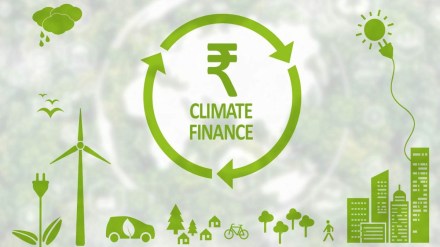By Arunabha Ghosh and Arjun Dutt
The upcoming 30th Conference of the Parties (COP30) of the United Nations Framework Convention on Climate Change is being billed as the “implementation COP”. The leadership has indicated that the focus will be on putting existing climate agreements into practice, not on setting new goals. For developing countries, implementation will remain a distant goal without adequate and affordable climate finance. Smaller domestic financial systems (relative to GDP) and higher costs of capital in these countries already constrain their ability to mobilise resources for climate action. Further, elevated sovereign debt can crowd out public spending on development, including climate action. The United Nations Conference on Trade and Development estimates that 3.4 billion people live in countries that spend more on interest payments than on education or health.
While COP29 in Baku outlined only broad commitments, it did launch the “Baku to Belém Roadmap to 1.3T”—a process to identify how to deliver $1.3 trillion per year in international climate finance to developing countries by 2035. A credible roadmap is critical to create certainty over the long-term availability of support, particularly with key developed countries announcing plans to review multilateral commitments and reduce foreign aid budgets earlier this year.
Drawing on a recent study by the Council on Energy, Environment and Water (CEEW), here is a six-point framework to help climate negotiators to cut through uncertainty and deliver real change at COP30.
First, create enabling investment environments in developing countries. Developing countries should establish clear policies for transition in sectors such as power, transport, and industry to address sector-specific financing bottlenecks. These should be complemented by cross-cutting policies such as taxonomies and disclosures that steer capital towards credible investment opportunities. Financial supervisors should also accelerate the integration of climate risks into regulation—through measures such as higher risk weights for banking assets exposed to climate vulnerability—to direct finance towards low-carbon and climate-resilient end uses.
Second, free up fiscal space and direct public expenditure in developing countries towards climate action. Debt-for-climate swaps, sovereign debt refinancing on preferential terms, and debt restructuring with principal reductions on a case-by-case basis could offer immediate relief. But these must be paired with structural reform to prevent recurrence of unsustainable debt (e.g. through International Monetary Fund-supported programmes under its Poverty Reduction and Growth Trust or the Resilience and Sustainability Trust). Once fiscal headroom is created, budgeting aligned with sustainable development goals could help direct public finance towards low-carbon and climate-resilient growth.
Third, leverage South-South cooperation through Global South-led multilateralism. Developing countries can no longer wait for the Global North alone to deliver finance. International finance hubs such as India’s Gujarat International Finance Tec-City International Financial Services Centre could serve as conduits of capital to the Global South. Green banks in these hubs, anchored by regional development banks—like the Asian Infrastructure Investment Bank or the Asian Development Bank— could help create viable investment pipelines by offering project preparation services and by aggregating and de-risking project portfolios. Investment-ready portfolios could facilitate investment from one developing country into another’s markets. Such measures could build on existing cross-investment among BRICS countries in each other’s sustainable bond markets.
Fourth, rebalance international public capital flows towards climate adaptation on concessional terms across developing countries. The existing mitigation-heavy pattern of international climate finance must change. Funding mechanisms like CEEW’s proposed Global Resilience Reserve Fund—which pools risks across developing countries and is capitalised by special drawing rights (SDRs)—could expand climate insurance cover at lower costs and help build resilience.
Fifth, target international mitigation finance strategically. International public capital should focus on countries where energy needs and clean energy potential intersect, offering scope for the highest emissions reduction at the lowest cost. The largely untapped callable capital of multilateral agencies could be utilised to strengthen capacities to guarantee country risks and lower costs of capital. Clean energy generated beyond domestic needs could be exported through initiatives such as One Sun, One World, One Grid, generating revenues for host countries while aiding buyer countries advance their climate goals. Innovative sources such as carbon markets, solidarity levies (with exceptions for developing countries), and the voluntary rechannelling of SDRs should also be explored.
Sixth, strengthen both domestic and multilateral development finance institutions (DFI) to deliver finance. Developing countries’ domestic DFIs are best placed to identify local financing opportunities and bottlenecks. Partnering them with multilateral development banks (MDBs) could help build strong investment pipelines. Reforming MDBs requires political will from sovereign shareholders to act on recommendations of the Indian and Brazilian G20 Presidencies, including balance sheet optimisation, recapitalisation, and SDR rechannelling. MDBs should also institutionalise private capital mobilisation, creating ring-fenced funds managed by them but financed by private investors. This could offer them the benefits of MDB project selection, governance and quality assurance, and allow for scaling of capital flows without expanding MDB balance sheets.
Implementing this six-point framework will require a shared sense of purpose. Developing countries must strengthen their own policies and cooperation mechanisms, while the Global North must honour its commitments and expand climate finance. Presciently, the COP30 Presidency has called for mutirão or collective global effort to conjure the alchemy that transforms ambition into implementation. Here’s hoping the Presidency’s call does not go in vain.
Arunabha Ghosh and Arjun Dutt are respectively CEO and Senior Programme Lead, Council on Energy, Environment and Water. Ghosh is also Special Envoy for COP30 representing South Asia.
Disclaimer: Views expressed are personal and do not reflect the official position or policy of FinancialExpress.com. Reproducing this content without permission is prohibited.
